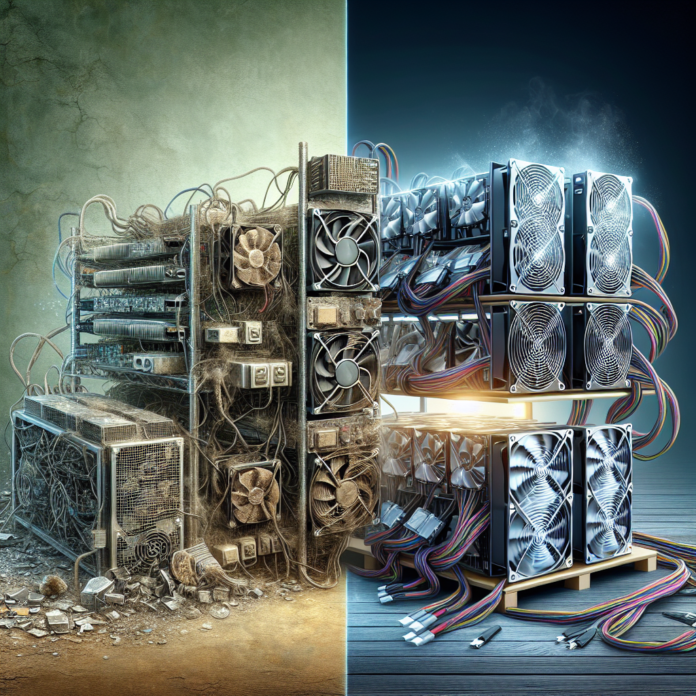The cryptocurrency mining landscape is both competitive and fast-paced, with miners continually seeking ways to optimize their operations and increase profitability. A key aspect of maintaining a successful mining venture is understanding and managing the lifecycle of mining hardware, along with making strategic decisions about when to upgrade.
Assessing Mining Hardware Lifecycle
Mining hardware, like any other electronic equipment, has a usable life expectancy. Factors such as operating temperature, workload, maintenance, and advancements in technology play critical roles in determining how long your mining hardware will remain effective and efficient.
Understanding Depreciation and Performance
Mining hardware undergoes regular wear and tear, leading to depreciation over time. Its ability to solve complex algorithms and earn rewards diminishes as new, more advanced hardware enters the market. This ongoing cycle makes it vital for miners to stay informed about the latest hardware innovations.
Planning for Hardware Rotation
Establishing a hardware rotation plan is essential. By forecasting the expected operational life of your mining equipment and reserving capital for reinvestment, you can smoothly transition to newer technologies without interrupting your mining activities. Websites like CoinWarz provide calculators that can help you assess the profitability of your equipment, assisting in making informed decisions regarding hardware replacement.
When to Upgrade Mining Hardware
Monitoring Technology Advances
Being aware of the latest advancements in mining technology is crucial. Launches of more powerful and energy-efficient mining rigs can rapidly change the mining landscape. Staying in the loop about releases from companies such as Bitmain and their impact on the hash rate and difficulty levels of various cryptocurrencies will help you determine the optimal time to upgrade.
Evaluating Energy Efficiency
Upgrading isn’t just about raw power; energy efficiency is a significant consideration. As electricity costs continue to be one of the biggest expenses in mining operations, shifting to newer hardware with better watts-to-hash-rate ratios can substantially reduce overhead and improve profitability.
Cost-Benefit Analysis
Conducting a thorough cost-benefit analysis is imperative when considering an upgrade. Compare the costs of new equipment with the anticipated increase in mining revenue. Don’t forget to factor in the potential resale value of your old hardware on platforms like eBay to offset some of the upgrade costs.
Strategies for Upgrading
Incremental Upgrades
Gradual, incremental upgrades can help spread costs over time and reduce the financial burden. This approach allows you to keep pace with technological advancements without making substantial one-time investments.
Hosted Mining Services
Hosted mining services allow you to rent the latest mining hardware, like those offered by Compass Mining, which can provide access to newer technology without the need for immediate full investment.
Joining Mining Pools
For individuals unable to invest in the latest hardware, joining mining pools can be an alternative strategy. Mining pools combine the hashing power of multiple miners, increasing the chances of earning mining rewards. Although rewards are shared, the approach can offer more consistent returns than solo mining with older hardware.
Final Thoughts
Effectively navigating the lifecycles and upgrades of mining hardware requires a balance of operational management, market observation, and strategic investment. By actively managing hardware assets and staying informed about technological advancements, miners can maintain profitability in a dynamic market. As with any investment, due diligence and careful planning are key components of success in cryptocurrency mining.




 AGF-B.CO
AGF-B.CO